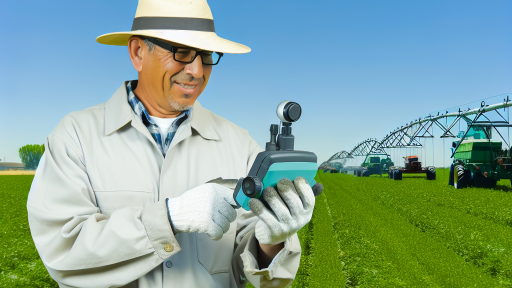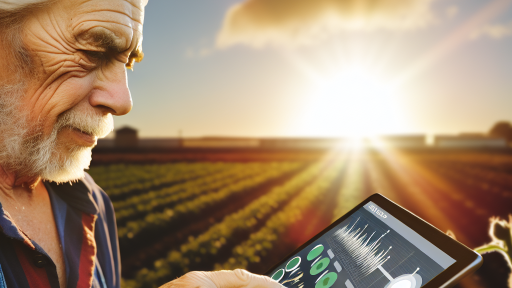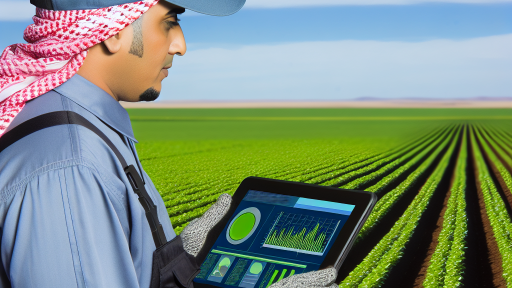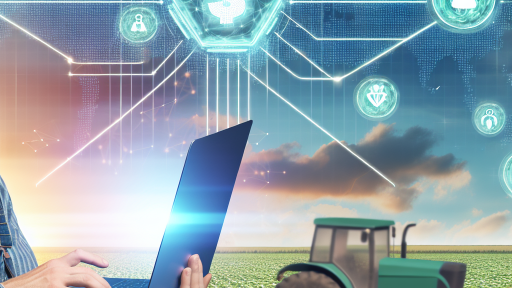Introduction to Sensor Technology in Agriculture
Sensor technology revolutionizes the agricultural landscape.
Farmers leverage these devices to enhance crop management.
Specifically, sensors monitor various environmental factors.
This allows for real-time data collection and analysis.
Consequently, farmers can make informed decisions.
The Role of Sensors in Crop Disease Monitoring
Sensors detect early signs of crop diseases effectively.
They collect data on soil moisture, temperature, and humidity.
This information helps identify potential disease outbreaks.
Moreover, sensors alert farmers to sudden changes in conditions.
This proactive approach minimizes crop loss and maximizes yield.
Types of Sensors Used in Agriculture
Various sensors play critical roles in modern farming.
These include soil sensors, climate sensors, and drone technology.
- Soil sensors measure nutrient levels and moisture content.
- Climate sensors track temperature and humidity fluctuations.
- Drones equipped with sensors provide aerial imagery.
Each type of sensor contributes valuable data for farmers.
Benefits of Sensor Technology in Farming
Utilizing sensor technology offers numerous advantages.
First, it enhances precision agriculture practices.
Transform Your Agribusiness
Unlock your farm's potential with expert advice tailored to your needs. Get actionable steps that drive real results.
Get StartedThis method optimizes resource use, reducing waste.
Second, it helps farmers increase their yields significantly.
Additionally, sensors facilitate sustainable farming practices.
This aligns with global efforts to protect the environment.
Overview of Crop Diseases and Their Impact on Farming
Understanding Crop Diseases
Crop diseases pose significant threats to agricultural productivity.
They can lead to reduced yields and financial losses for farmers.
Understanding these diseases is crucial for effective management.
The most common types include fungal, bacterial, and viral infections.
Identifying Common Crop Diseases
Several diseases frequently impact crops around the world.
- Powdery mildew affects various plants, especially in humid conditions.
- Blight can devastate potato and tomato crops rapidly.
- Rust diseases target cereal crops, diminishing overall harvests.
Recognizing symptoms helps in timely intervention.
The Economic Impact of Crop Diseases
Crop diseases can lead to substantial economic losses.
Farmers often face increased costs due to pesticides and treatments.
Additionally, poor crop yield can result in reduced income.
Ultimately, this affects food supply chains and prices.
Consequences for Food Security
In the broader context, crop diseases threaten food security.
They affect not only farmers but also consumers worldwide.
When harvests fail, food scarcity can lead to rising prices.
This impact can destabilize economies, particularly in developing regions.
Strategies for Disease Management
Effective management strategies can mitigate the impact of crop diseases.
- Crop rotation helps break disease cycles.
- Using disease-resistant seed varieties reduces risks.
- Implementing integrated pest management promotes ecological balance.
Staying informed about potential threats is essential for farmers.
Types of Sensor Technology Used for Disease Monitoring
Remote Sensing Technology
Remote sensing technology provides valuable data on crop health.
It uses satellite imagery and aerial drones to monitor large fields.
This method detects changes in color, texture, and moisture levels.
Farmers can quickly identify areas with potential disease outbreaks.
Showcase Your Farming Business
Publish your professional farming services profile on our blog for a one-time fee of $200 and reach a dedicated audience of farmers and agribusiness owners.
Publish Your ProfileSoil Moisture Sensors
Soil moisture sensors measure the water content in the soil.
They help determine if crops are stressed due to drought or overwatering.
Maintaining optimal soil moisture is crucial for preventing diseases.
This allows for timely irrigation adjustments based on sensor data.
Temperature and Humidity Sensors
Temperature and humidity sensors monitor environmental conditions closely.
They help in predicting the likelihood of disease outbreaks.
Farmers can adjust their strategies based on microclimate data.
This information is vital for managing crops and reducing disease risks.
Multispectral and Hyperspectral Sensors
These advanced sensors collect data across various wavelengths.
They provide insights into plant health that the human eye cannot see.
This technology detects early signs of stress and disease in plants.
Farmers gain a precise understanding of crop conditions over time.
Wearable Sensor Technology
Wearable sensors can be used on farm equipment or livestock.
These devices monitor physiological indicators of plants and animals.
Real-time data helps farmers respond promptly to health issues.
This technology enhances overall farm management and disease control.
Integration with IoT Devices
Integrating sensors with IoT devices streamlines data collection.
This approach allows for seamless monitoring of farm conditions.
Farmers receive alerts when conditions indicate potential diseases.
Moreover, this technology fosters data-driven decision-making.
Delve into the Subject: Integrating Renewable Energy into Large-Scale Farms
How Sensors Collect and Analyze Data on Crop Health
Overview of Sensor Technology
Sensor technology plays a crucial role in modern agriculture.
These sensors monitor various environmental factors affecting crops.
Farmers utilize different types of sensors for effective crop management.
Types of Sensors Used
Various sensors collect data on soil moisture, temperature, and humidity.
For instance, soil sensors provide real-time feedback on moisture levels.
Another example is weather stations that track climatic conditions.
Additionally, remote sensing satellites offer valuable aerial views of crops.
Data Collection Process
Farmers install sensors throughout their fields for extensive coverage.
These devices gather data continuously throughout the growing season.
Data is then transmitted wirelessly to cloud-based platforms.
With this data, farmers can quickly access crop health information.
Data Analysis Techniques
Advanced algorithms analyze the collected data for patterns and trends.
Farmers receive actionable insights through user-friendly dashboards.
This analysis helps in identifying potential disease outbreaks early.
Benefits of Using Sensor Technology
Using sensors enhances decision-making for crop management.
Farmers can optimize water and fertilizer usage efficiently.
This technology leads to healthier crops and improved yields.
Moreover, it reduces the reliance on chemical treatments, promoting sustainability.
Gain More Insights: Understanding CRISPR Technology In Agriculture
Showcase Your Farming Business
Publish your professional farming services profile on our blog for a one-time fee of $200 and reach a dedicated audience of farmers and agribusiness owners.
Publish Your ProfileCase Studies Demonstrating Successful Implementation of Sensors
Enhanced Disease Detection in Wheat Crops
A farm in Nebraska implemented sensor technology to monitor wheat crops.
The sensors detected early signs of fungal infections.
This proactive approach allowed timely intervention by agronomists.
As a result, the total crop yield increased significantly.
This case illustrates the effectiveness of sensor technology in disease management.
Using Drones for Potato Blight Monitoring
A farm in Idaho utilized drones equipped with imaging sensors.
The drones captured high-resolution images of potato fields.
This helped identify zones of potential blight outbreaks.
Farmers could apply fungicides precisely where needed.
The targeted approach reduced chemical use and costs.
Moreover, the overall health of the potato crop improved.
Real-Time Monitoring in Tomato Greenhouses
A greenhouse operation in Florida installed environmental sensors.
These sensors tracked humidity, temperature, and light levels.
Whiteflies, a common pest, were detected early by the sensors.
Farmers acted immediately, preventing population outbreaks.
This timely intervention protected the tomato yield significantly.
Furthermore, the greenhouse reported reduced pesticide usage.
Soil Moisture Sensors for Crop Health
A corn farm in Iowa made use of soil moisture sensors.
These sensors provided real-time data about soil conditions.
Farmers optimized irrigation schedules based on sensor readings.
This led to healthier crops and reduced water waste.
Consequently, the farm noted lower operational costs overall.
These findings demonstrate how technology can lead to sustainable farming practices.
Uncover the Details: Advanced Soil Health Monitoring Technologies for Sustainable Agriculture
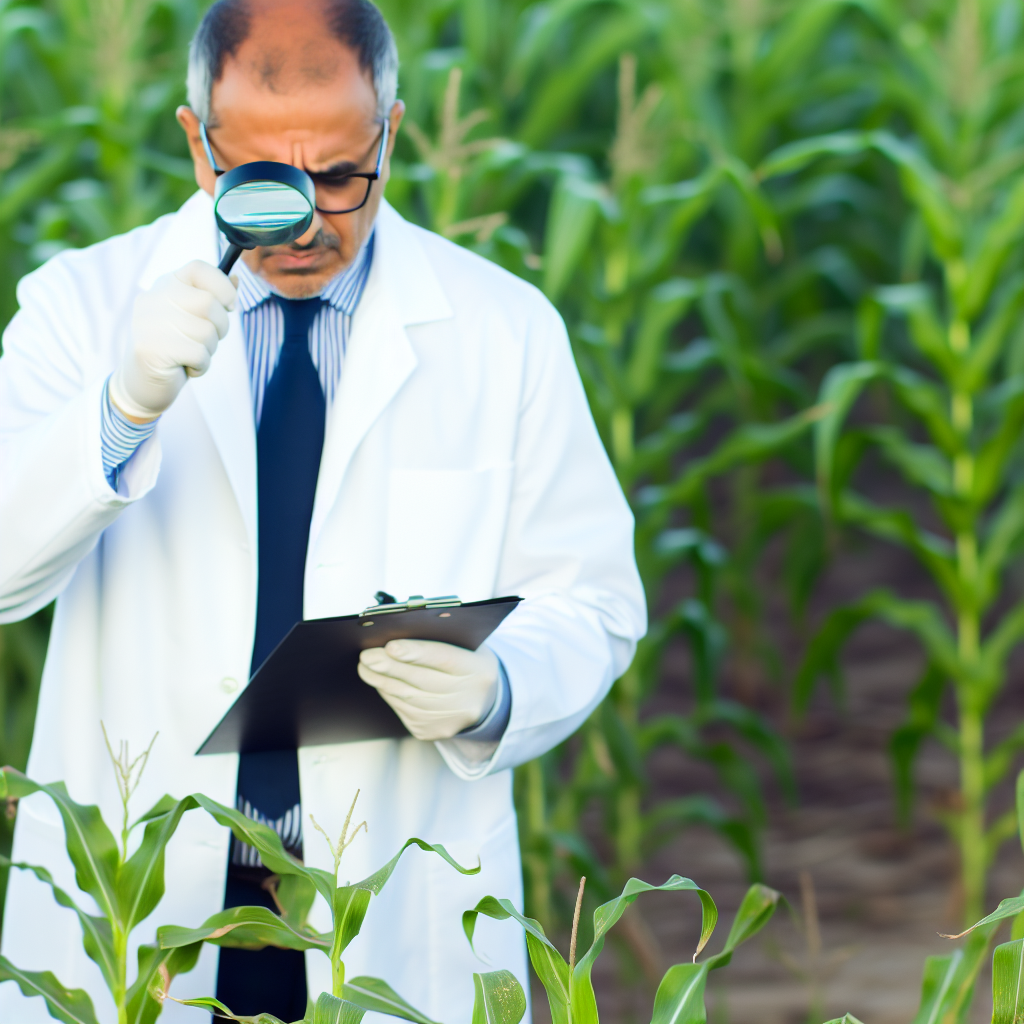
Benefits of Using Sensors for Early Disease Detection
Proactive Disease Management
Sensors enable farmers to monitor crop health continuously.
This constant surveillance helps identify disease symptoms early.
As a result, farmers can implement timely interventions.
Consequently, early detection leads to improved crop yields.
Resource Optimization
Using sensors optimizes resource use on farms.
Farmers can allocate water and nutrients more efficiently.
This targeted application reduces waste and lowers costs.
Additionally, it minimizes the environmental impact of farming.
Data-Driven Decision Making
Sensors provide valuable data for informed decision-making.
Farmers can analyze trends related to crop health over time.
This analysis allows for better planning and forecasting.
Furthermore, implementing data-driven strategies enhances productivity.
Enhanced Crop Monitoring
Integrating sensor technology improves overall crop monitoring.
Farmers can utilize multiple sensor types simultaneously.
These include temperature, humidity, and soil moisture sensors.
Such integration yields a comprehensive view of crop health.
Showcase Your Farming Business
Publish your professional farming services profile on our blog for a one-time fee of $200 and reach a dedicated audience of farmers and agribusiness owners.
Publish Your ProfileReduced Reliance on Chemicals
Remote sensing can diminish the need for chemical treatments.
By detecting diseases early, targeted chemical applications become possible.
This leads to healthier crops and reduced chemical exposure.
Ultimately, it fosters sustainable farming practices.
Collaboration and Knowledge Sharing
Sensors facilitate collaboration among farmers and researchers.
They allow sharing of data and insights across platforms.
This collective knowledge enhances the agricultural community.
Consequently, it drives innovation and problem-solving efforts.
You Might Also Like: Farm Management Software: Streamlining Daily Farming Operations
Challenges and Limitations of Sensor Technology in Monitoring
High Initial Costs
Implementing sensor technology can require significant initial investment.
Farmers may face challenges in funding these new technologies.
Moreover, maintenance costs can also add up over time.
Data Overload
Sensors generate vast amounts of data daily.
This data can overwhelm farmers and agronomists.
Deciding which data to prioritize can be challenging.
Technical Expertise Requirements
Using advanced sensor technologies often demands specialized knowledge.
Farmers may lack the necessary skills to interpret sensor data effectively.
Therefore, training or hiring experts may be essential.
Environmental Factors
Weather conditions can affect sensor performance.
Heavy rain or extreme temperatures may impair sensor accuracy.
Thus, ensuring reliability in varied climates becomes crucial.
Limited Connectivity
Many farms are located in remote areas with poor internet connectivity.
This limitation can hinder real-time data transmission.
Farmers may miss critical alerts due to connectivity issues.
Integration Challenges
Integrating different sensor technologies can be complex.
Compatibility issues often arise between various systems.
Moreover, outdated equipment may not work well with new sensors.
Future Trends in Sensor Technology for Agriculture
Advancements in IoT Integration
The Internet of Things (IoT) continues to revolutionize agriculture.
Farmers now utilize connected devices for real-time data collection.
This integration enhances decision-making processes significantly.
Furthermore, IoT systems improve efficiency on the farm.
Development of Smart Sensors
Smart sensors offer advanced capabilities in monitoring crop health.
These sensors can detect diseases at an early stage.
Moreover, they provide farmers with actionable insights.
This ensures timely interventions to mitigate crop loss.
Use of Drones and Aerial Monitoring
Drones are becoming essential tools for monitoring large fields.
They capture high-resolution images that reveal crop conditions.
This aerial perspective helps in identifying disease outbreaks.
As a result, farmers can respond quickly and effectively.
Enhanced Data Analytics
Data analytics play a vital role in modern farming practices.
Showcase Your Farming Business
Publish your professional farming services profile on our blog for a one-time fee of $200 and reach a dedicated audience of farmers and agribusiness owners.
Publish Your ProfileFarmers analyze trends and patterns derived from sensor data.
This analysis aids in predicting potential crop diseases.
Consequently, farmers can adopt preventative measures proactively.
Increased Focus on Sustainability
The agricultural sector is shifting towards sustainable practices.
New sensor technologies support eco-friendly farming methods.
These technologies optimize resource use while minimizing waste.
In turn, this promotes a healthier environment for future generations.
Additional Resources
GAO-24-105962, Precision Agriculture: Benefits and Challenges for …

